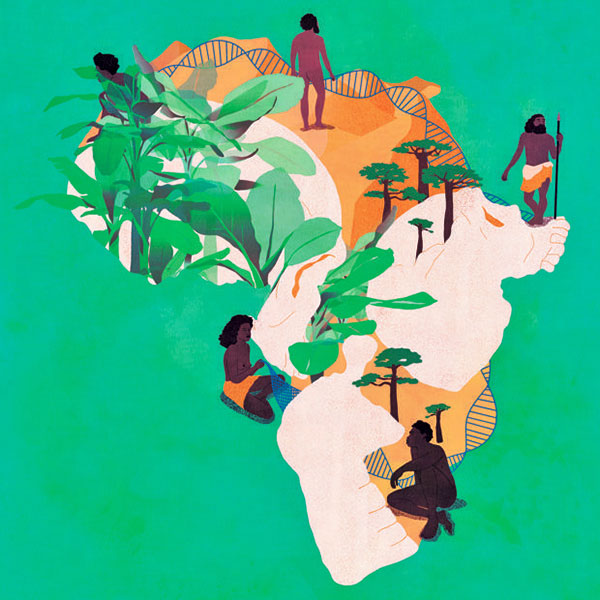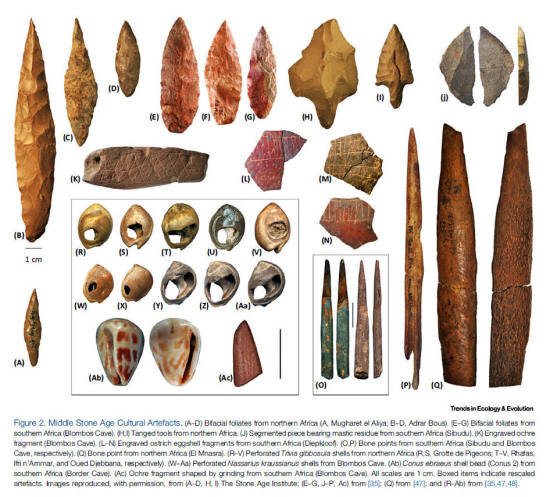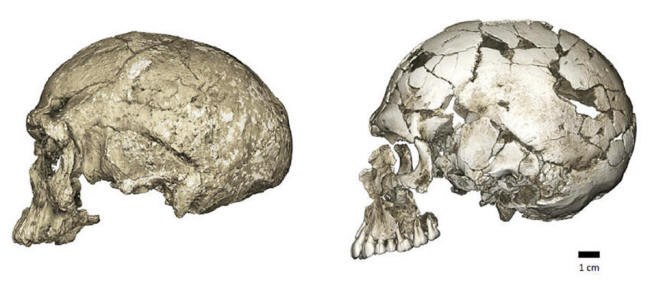It indicates that our species came from interactions
between a set of populations whose connectivity
It changed over time.
Yasmine Gateau
Max Planck Institute
for the Science of Human History
Scientists suggest that Homo sapiens
not from a single ancestral population
in a region of Africa,
as often it stated ...
The history of human evolution is far from linear.
It is an intricate mosaic of species, crosses and migration which is not easy to put every little piece. The new findings shed light on the labyrinth of our origins, but instead to simplify it more and more entangled.
A good example is the latest research by an international team of scientists.
So far, many had assumed that early humans originated in Africa as a single relatively large ancestral population, but the new scientific consortium believes that the beginnings were much more diverse, with ancestors scattered across the spaced temporarily different habitats continent such as forests or deserts.
So far, many had assumed that early humans originated in Africa as a single relatively large ancestral population, but the new scientific consortium believes that the beginnings were much more diverse, with ancestors scattered across the spaced temporarily different habitats continent such as forests or deserts.
Milenios separation resulted in an astounding variety of human forms, which mixture finally gave rise to Homo sapiens.
cultural artifacts from the Stone Age
North and South Africa.
Eleanor Scerri / Francesco d'Errico / Christopher Henshilwood
While it is widely accepted that our species was born in Africa, it is unclear how we evolved within the continent.
In an article ( Did our Species Evolve in subdivided Populations across Africa, and Why Does It Matter ? ) Published this week in the journal Trends in Ecology and Evolution ', the team puts into question the idea that there was a single population interchanged genes and technologies such as stone tools of a more or less random.
From the study of bones, stones, genes and something much less common such as new and more detailed reconstructions of climates and habitats of Africa in the last 300,000 years, researchers have come to their own conclusions, much more complex.
From the study of bones, stones, genes and something much less common such as new and more detailed reconstructions of climates and habitats of Africa in the last 300,000 years, researchers have come to their own conclusions, much more complex.
"The stone tools and other artifacts, generally known as material culture, have distributions significantly clustered in space and time , " says lead study author Eleanor Scerri , of the University of Oxford in the UK and the Max Institute Planck Science of Human History in Germany."While there is a continental trend towards more sophisticated material culture, this 'modernization' clearly does not originate in a region or place in a given period".
from an elongate shape to a globular shape.
The latter evolves within the lineage of Homo sapiens
through an expansion of the cerebellum and parietal bulge.
Philipp Gunz, Max Planck Institute for Evolutionary Anthropology
Human fossils tell a similar story.
"When we look at the morphology of human bones in the last 300,000 years, we see a complex combination of archaic and modern at different places and at different times traits," says Chris Stringer, a researcher at the Museum of Natural History in London and co-author in the study ."As with material culture, if we see a continental trend towards modern human form, but different modern features appear in different places at different times, and some archaic features are present until very recently."
Isolation cycles
Genes agree.
"It is difficult to reconcile genetic patterns we see in living African and DNA extracted from the bones of Africans who lived in the last 10,000 years, with the existence of an ancestral human population," says Professor Mark Thomas, geneticist University College London and co-author of the study."We see signs of a deep reduced connectivity in the past, some very old and levels of overall genetic diversity than a single population would cost you to keep bloodlines."
To understand why human populations were so divided, and how these divisions changed over time, researchers looked past climates and environments of Africa, which give a picture of the habitable zones changing and often isolated.
Many of the most inhospitable regions of Africa today, as the Sahara, were one wet and green again, with interlocking networks of lakes and rivers, and abundant wildlife.
Similarly, some tropical regions are humid and arid green today were one time.These changing environments influenced human populations, which have gone through many cycles of isolation.
This lead to local adaptation and development of a material culture and unique biological composition, followed by genetic and cultural mixture.
"The evolution of human populations in Africa was multiregional. Our descent was multiethnic. And the evolution of our material culture was multicultural," said Scerri."We have to look at all regions of Africa to understand human evolution.






No hay comentarios:
Publicar un comentario
No se admiten comentarios con datos personales como teléfonos, direcciones o publicidad encubierta